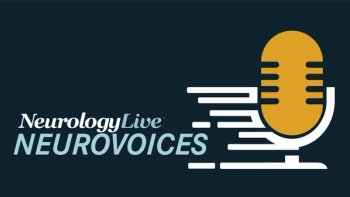
Treatment Approach in SMA
A discussion of the multidisciplinary treatment approach in spinal muscular atrophy.
Episodes in this series

James Wymer, MD: The next question is, how do you treat SMA [spinal muscular atrophy]? You have to treat SMA with a complete comprehensive approach. There are a lot of data showing that when you look at addressing diseases like this, you think about approved medication and you think about the complementary additional therapies that are going to get involved. There’s a shift from supportive care, physical therapy, occupational therapy, because we’ve got newer medications, which we’ll talk about. But 1 of the things I want to stress is physical therapy, occupational therapy, speech and language pathology, respiratory therapy, developing exercise programs on all those are key to the treatment of spinal muscular atrophy. Patients with spinal muscular atrophy should be seen in a clinic that has this type of multidisciplinary approach that brings everybody a specialized treatment program for these patients.
There has been a shift in the last couple of years, backing up to what we were talking about before, the SMN1 and SMN2. We know that the difference between the 2 is an abnormal splicing pattern in SMN2. Three medications have come out that have worked to replace the SMN1, 2 of them by altering the splicing in SMN2. When you do that you can increase the levels of SMN1, which can therefore treat the disease. That gets into that component that all patients should be in an FDA-approved medication, 1 of 2 that will work to try to, at the cellular level, replete the amount of SMN1. In combination with that, the best treatment plan is while you’re treating the disease and correcting it on a molecular basis with these 2 medications, you’re also working with physical therapy, occupational therapy, speech and language pathology, and the respiratory therapist to develop exercise programs to enhance any therapeutic benefit that you’re getting.
There’s a lot of thought about these new treatments, but they work only if you get them in combination with the other therapy. Getting into a real comprehensive center is what’s going to give you the best approach to doing that. That’s what your major goal of therapy is going to be: trying to improve the patient’s quality of life. When you look at the different therapies, we have a couple that I was mentioning. For adults, we have 2. We have an oral and we have an intrathecal. They both try to correct the splicing deficit that has happened in that SMN2 to enhance the level of SMN1. They each have their pluses and minuses. We neurologists—and the patients—need to think that 1 isn’t the perfect 1. You’ve got to look at both and decide which is going to work best for you.
There are advantages to the intrathecal: It’s an antisense oligonucleotide that’s going right into the spinal cord, where the problem is and trying to correct it directly. There’s an advantage to the oral: It’s a solution that you have to take. It’s a solution that you would drink, which is a lot preferable over an intrathecal injection. But remember, if you’re drinking a medication, it’s got to go through your whole body, and there can be adverse effects. There may not be any adverse effects, in which case that may be the perfect medication. Look at the pluses and minuses of each medication and go through with the patient and neurologist as a team to come up with the best medication. One isn’t better than another. They’re equal options, and you’re deciding which is going to be the best.
Transcript Edited for Clarity
Newsletter
Keep your finger on the pulse of neurology—subscribe to NeurologyLive for expert interviews, new data, and breakthrough treatment updates.














































